
-
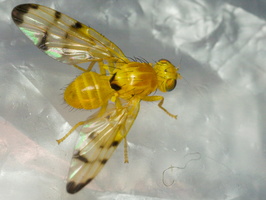 Acidia cognata · margasparnė
Acidia cognata · margasparnė
-
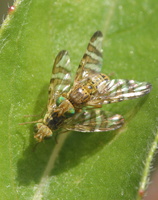 Chaetostomella cylindrica · margasparnė
Chaetostomella cylindrica · margasparnė
-
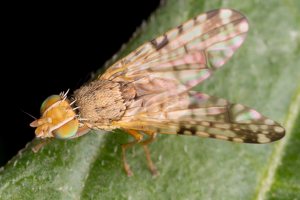 Dioxyna bidentis · margasparnė
Dioxyna bidentis · margasparnė
-
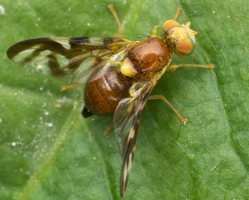 Euleia heraclei · salierinė minamusė
Euleia heraclei · salierinė minamusė
-
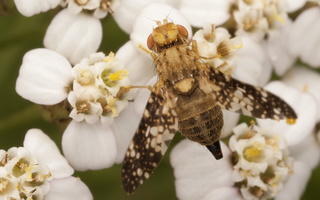 Oxyna flavipennis · margasparnė
Oxyna flavipennis · margasparnė
-
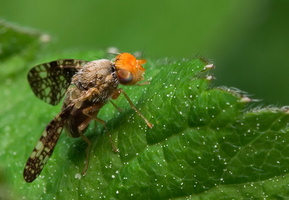 Oxyna parietina · margasparnė
Oxyna parietina · margasparnė
-
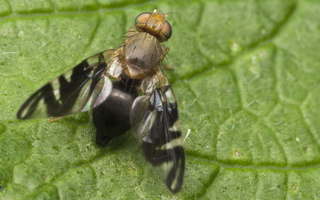 Philophylla caesio · minamusė
Philophylla caesio · minamusė
-
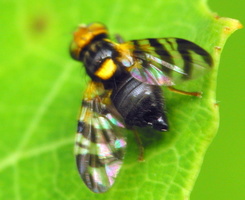 Rhagoletis cerasi · vyšninė margasparnė
Rhagoletis cerasi · vyšninė margasparnė
-
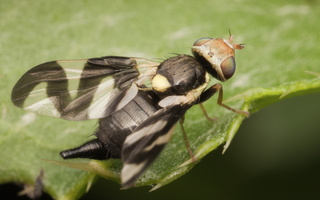 Urophora cardui · daginė margasparnė
Urophora cardui · daginė margasparnė
-
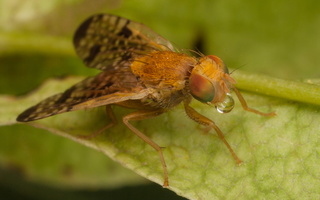 Xyphosia miliaria · margasparnė
Xyphosia miliaria · margasparnė
- peacock flies, fruit flies
- Fruchtfliegen, Bohrfliegen
- raibspārnmušu dzimta, raibspārnmušas
- nasionnicowate
- https://en.wikipedia.org/wiki/Tephritidae
- A Pictorial Guide to the Tephritidae of Britain and Ireland, PDF
Some fruit flies have extensive mating rituals or territorial displays. Many are brightly colored and visually showy. Some fruit flies show Batesian mimicry, bearing the colors and markings of dangerous arthropods such as wasps or jumping spiders because it helps the fruit flies avoid predation, though the flies lack stingers.
Adult tephritid fruit flies are often found on the host plant and feeding on pollen, nectar, rotting plant debris, or honeydew. Tephritidae is one of two fly families referred to as "fruit flies". Various species of fruit fly cause damage to fruit and other plant crops.